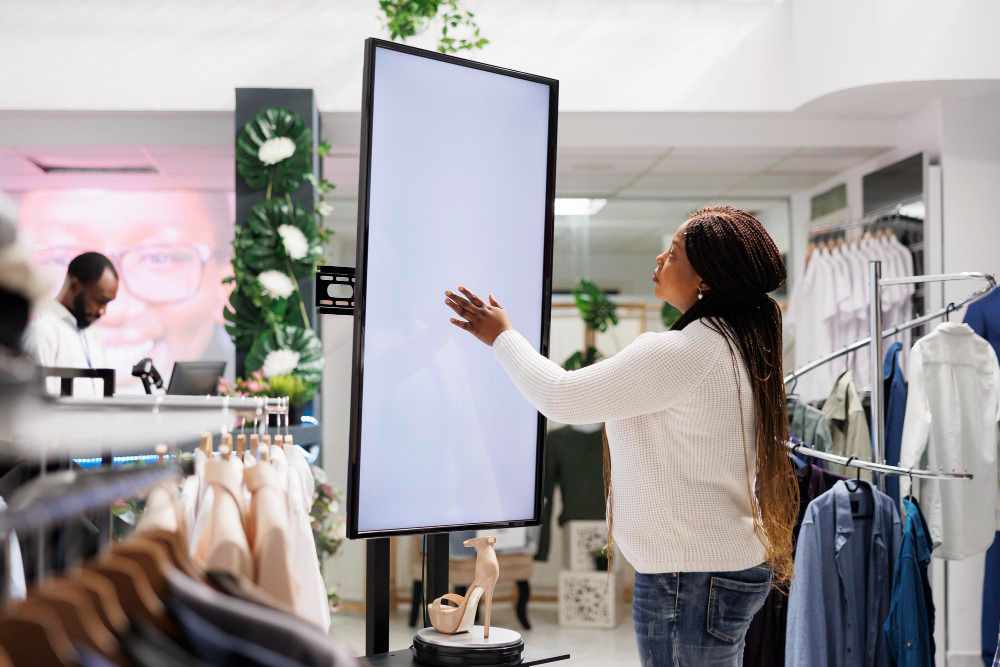Indoor LED displays have transformed the way businesses, event organizers, and institutions communicate, offering vibrant, dynamic visuals that captivate audiences in controlled environments. Unlike their outdoor counterparts, indoor LED displays prioritize high resolution, color accuracy, and versatility to suit diverse settings, from retail stores to corporate boardrooms. In Malaysia, where digital signage is projected to grow at a 7.8% CAGR through 2033, these displays are pivotal for enhancing customer experiences and boosting engagement. This article delves into the main types of indoor LED displays, their commercial applications, benefits, and considerations, providing insights for businesses navigating this dynamic technology.
Types of Indoor LED Displays
Indoor LED displays come in several forms, each designed for distinct purposes, environments, and budgets. Below are the primary types shaping Malaysia’s commercial landscape:
1. LED Video Walls
LED video walls are large-scale, seamless displays composed of multiple LED panels, offering high brightness and resolution for immersive visuals. With pixel pitches as fine as P1.2 to P2.5, they deliver crisp images ideal for close viewing in settings like conference rooms, shopping malls (e.g., Pavilion Kuala Lumpur), or broadcast studios. These walls support dynamic content—videos, animations, live feeds—and are customizable in size and shape, from flat to curved configurations. In Malaysia, they’re popular in corporate lobbies and retail, enhancing brand storytelling with vibrant colors (up to 4.4 trillion shades).
2. Interactive LED Displays
Interactive LED screens integrate touch or sensor technology, enabling user engagement through gestures or taps. Often found in retail kiosks or museums, they use fine pixel pitches (P1.5-P3) for sharp, responsive interfaces. For example, a store in Suria KLCC might use them for product catalogs, allowing customers to browse via touch. These displays boost dwell time by 30%, per industry studies, and support gamified ads or wayfinding, making them ideal for experiential marketing.
3. Transparent LED Displays
Transparent LED screens combine visual impact with see-through aesthetics, perfect for retail windows or showrooms. With 70-90% transparency, they display ads while allowing natural light and visibility into spaces. Pixel pitches (P3.9-P7.8) balance clarity and transparency, suitable for luxury boutiques in Penang’s Gurney Plaza or car dealerships. They’re lightweight, easy to install, and create a futuristic appeal, though brightness (2,500-4,000 nits) is lower than video walls, limiting use in bright interiors.
4. Flexible LED Displays
Flexible LED panels, made of soft, bendable materials, allow creative installations like curved columns or irregular shapes. With pixel pitches of P2-P4, they’re used in malls, event spaces, or galleries for artistic displays. In Malaysia, flexible LEDs enhance trade shows or pop-up events, offering portability and unique designs. Their adaptability suits dynamic venues but requires careful calibration to avoid distortion.
5. LED Poster Displays
LED posters are slim, standalone units designed for portability and ease of use, often with P1.8-P3 pitches for high-definition ads. Common in retail chains or airports like KLIA, they’re plug-and-play, supporting quick content updates via USB or cloud. These are cost-effective for SMEs, with sizes around 2×1 meters, ideal for promotions or directional signage. Their mobility makes them versatile for temporary setups like product launches.
Commercial Applications in Malaysia
Each type serves unique commercial needs in Malaysia’s bustling economy. LED video walls dominate corporate settings, displaying presentations in boardrooms or live data in control rooms. Retail giants like AEON use them for in-store promotions, driving 25% higher foot traffic. Interactive displays shine in experiential zones, such as museums in Penang or tech fairs, where engagement metrics soar with touch-based content.
Transparent LEDs are a hit in luxury retail, with brands in Starhill Gallery using them to showcase products without blocking storefront views. Flexible displays enhance creative events, like fashion shows or art installations in Kuala Lumpur, while LED posters are staples for SMEs in secondary cities like Ipoh, offering affordable, high-impact ads. Across sectors—hospitality, education, transport—these displays elevate communication, with Malaysia’s digital signage market hitting USD 170.43 million in 2024.
Benefits of Indoor LED Displays
Indoor LED displays offer distinct advantages over traditional signage or LCDs. Their high resolution (up to 4K/8K with fine pitches) ensures sharp visuals, critical for close-range viewing. Brightness (800-2,500 nits) suits well-lit interiors, while energy efficiency (30-50% less power than LCDs) aligns with Malaysia’s sustainability push. Longevity, averaging 100,000 hours, reduces maintenance costs, and remote content management via cloud platforms enables real-time updates—perfect for festive sales during Hari Raya.
Versatility is a key draw: Video walls scale for grand displays, while posters offer plug-and-play simplicity. Interactive models boost engagement by 40%, per DOOH studies, driving sales through immersive experiences. Transparent and flexible displays add aesthetic value, modernizing spaces and attracting premium clientele. With measurable ROI—e.g., 20% sales uplifts in retail—these displays are strategic investments for Malaysian businesses.
Considerations and Challenges
Choosing the right indoor LED display involves balancing cost, environment, and purpose. Video walls, while impactful, are priciest (RM50,000-RM500,000), requiring professional installation and cooling systems for heat dissipation. Interactive displays demand robust software and maintenance to ensure responsiveness, adding 10-15% to costs. Transparent LEDs, though visually striking, may underperform in brightly lit areas, and flexible displays need precise engineering to avoid warping.
Malaysia’s humid climate necessitates proper ventilation to prevent overheating, especially for high-brightness units. Content creation is another hurdle—dynamic visuals require skilled design (RM5,000-RM15,000 per campaign). Regulatory compliance, such as fire safety certifications for indoor installations, adds minor costs. Businesses should partner with certified providers, conduct site assessments, and prioritize warranties (2-3 years) to mitigate risks.
5 FAQs
- What is the difference between indoor and outdoor LED displays?
Indoor LED displays use finer pixel pitches (P1.2-P4) for close-range clarity and lower brightness (800-2,500 nits) compared to outdoor displays (P4-P10, 5,000+ nits), which prioritize weather resistance and long-distance visibility. - Which indoor LED display is best for retail advertising?
Transparent and interactive LEDs excel in retail, offering see-through aesthetics for windows or touch-based engagement, boosting dwell time by 30%. - Are LED video walls suitable for small businesses?
While effective, video walls are costly (RM50,000+); SMEs may prefer LED posters (RM10,000) for affordable, portable promotions. - How do transparent LED displays benefit commercial spaces?
They allow natural light and visibility while displaying ads, ideal for luxury retail, with 70-90% transparency enhancing storefront appeal. - What maintenance is required for indoor LED displays?
Regular ventilation checks, software updates for interactive models, and professional servicing every 1-2 years ensure longevity and performance.
Want to know about outdoor led display screen? Read: https://quotes.blogingers.com/advertising-rates-for-outdoor-led-display-screens-in-malaysia/

